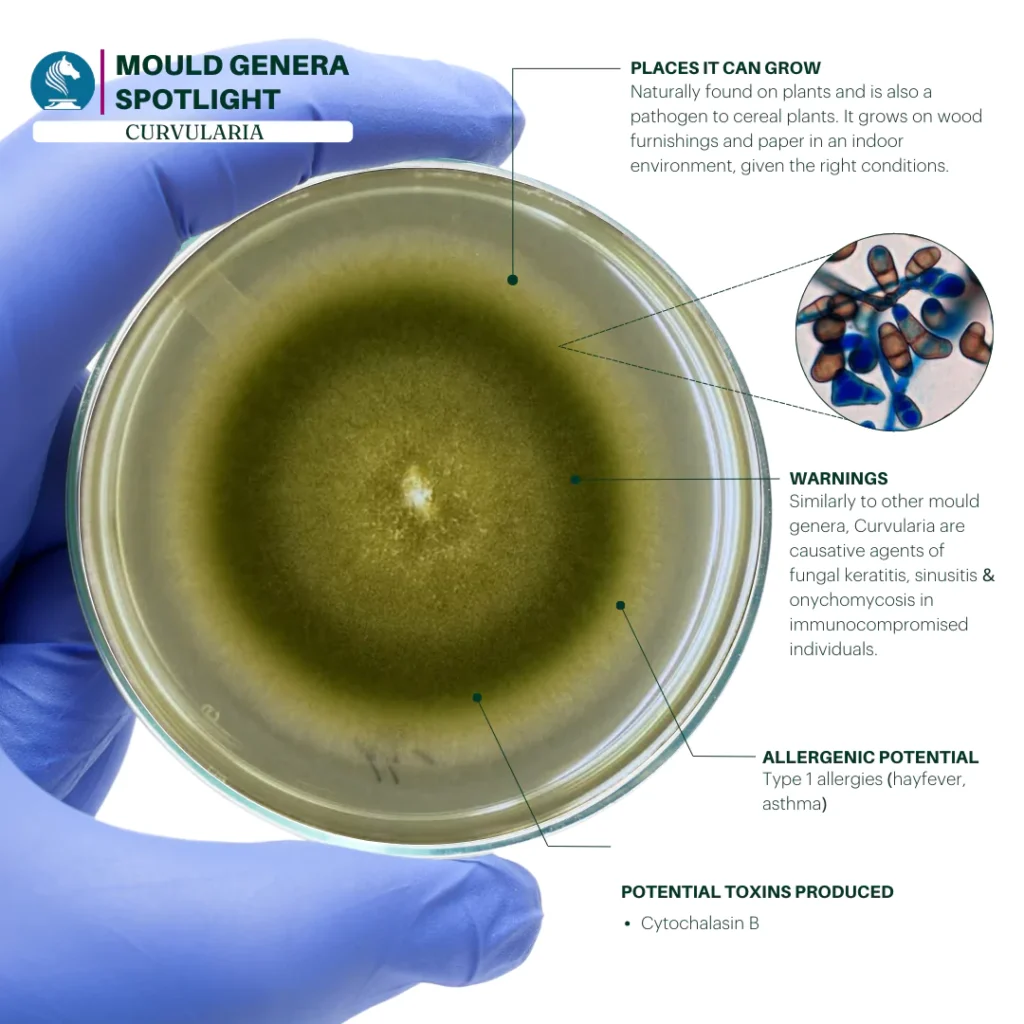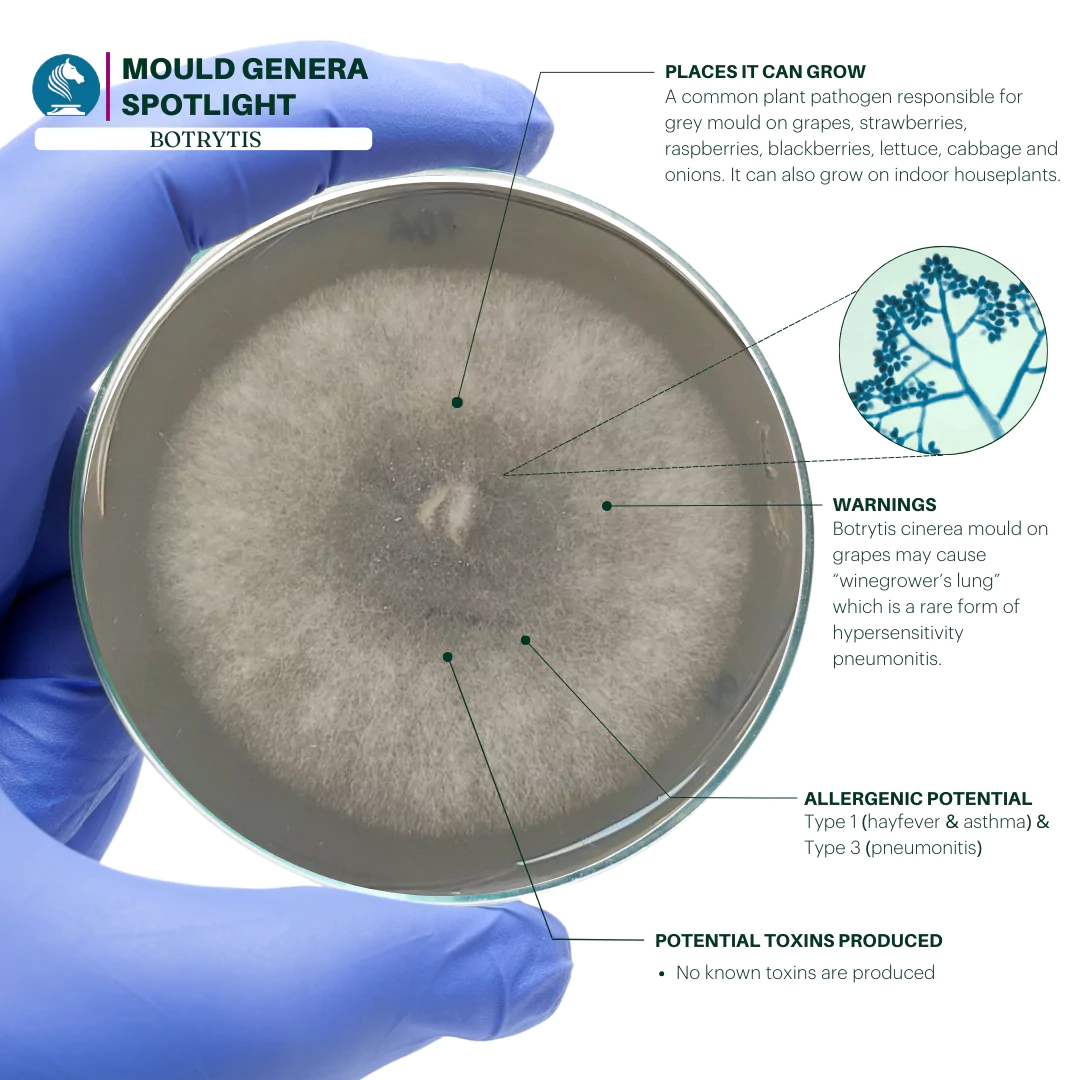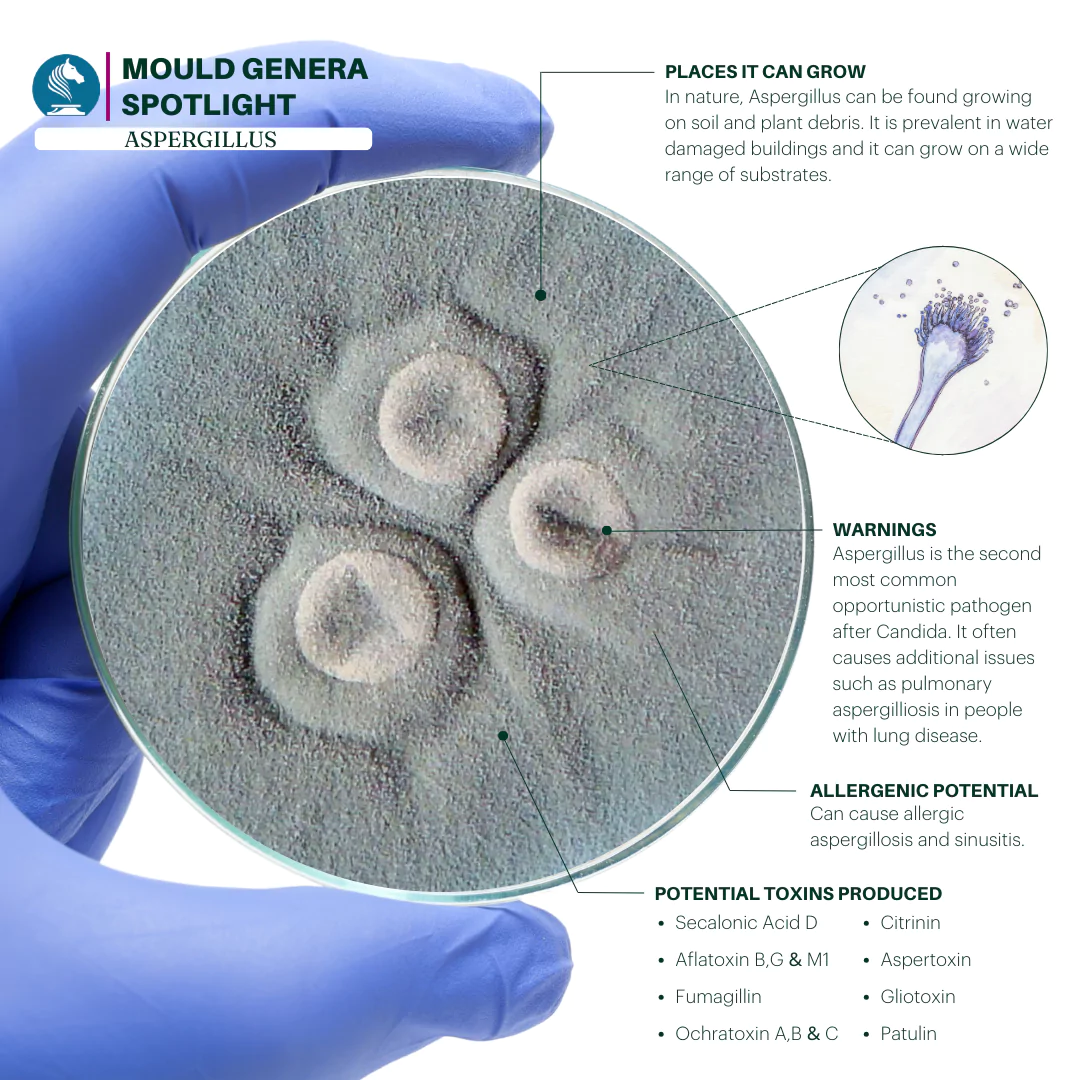
Mould Genera
Spotlight - Curvularia
Overview
Curvularia is a mould that thrives in warm, humid climates. It is characterised by its dark, curved spores and is commonly found on plants and in indoor environments with high humidity.

Habitat and Growth Locations
Curvularia prefers warmer locations, making it a common sight in various places:
- Outdoors: Found on grass, crops, and decaying plant material.
- Indoors: Often found on carpets, fabric, and in ventilation systems when moisture is high.
- Tropical climates: Prefers warm, moist regions, making it a common issue in greenhouses and agricultural settings.
Health Risks and Allergenic Potential
Curvularia can cause allergic reactions and respiratory issues in humans:
- Allergies: Can cause symptoms like nasal congestion, sneezing, and itchy eyes.
- Infections: May lead to keratitis (eye infection) and sinus infections, especially in sensitive individuals.
- Respiratory problems: Prolonged exposure can exacerbate existing respiratory conditions.
Toxins Produced
Curvularia produces a few mycotoxins that affect humans:
- Cytochalasin B
Industrial Uses
Interestingly, Curvularia is currently being researched and applied in:
- Agriculture: Some species are used to combat crop pests.




